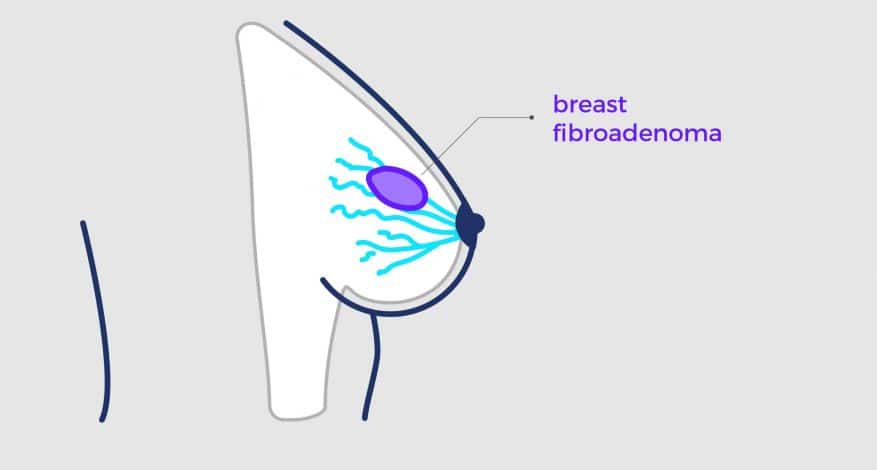These smooth, rounded, solid tumors consist of fibrous tissue and glandular tissue that forms a mass. If a fibroadenoma is large enough to touch, it will usually feel like a round, relatively firm lump that it is possible to move under the skin. It’s very rare for there to be breast cancer in association with a fibroadenoma.
How common are Fibroadenomas?
Benign breast lumps, including fibroadenomas, are very common. About 10% of women have one of these breast lumps, often without even knowing. A person may have one fibroadenoma or many. Fibroadenomas may maintain their size or grow or shrink over time. They most often appear in women between the ages of 15 and 35, or during pregnancy and breastfeeding. Some researchers have found that women with a family history of breast cancer are more likely to get fibroadenomas.
Most women only have one. But about 10% to 15% of women who get them have more than one, either at the same time or overtime.
What causes Fibroadenomas?
Some women have reported that avoiding foods and drinks that are stimulants (like tea, chocolate, soft drinks, and coffee) has improved their breast symptoms. Even though, studies have found no link between ingesting stimulants and improving breast symptoms. Moreover, they may be related to changing levels of hormones, since they often appear during puberty or pregnancy and go away after menopause.
Types of Fibroadenomas
There are a few different kinds:
• Simple fibroadenomas. They look the same all over when you view them under a microscope.
• Complex fibroadenomas. These are bigger and tend to affect older women. They might have cells that grow rapidly.
• Juvenile fibroadenomas. These are the most common type of breast lump found in girls and adolescents between the ages of 10 and 18. They can grow large, but most shrink over time. Some disappear.
• Giant fibroadenomas. They can grow to larger than 2 inches. They may need to be removed if they press on or replace other breast tissue.
How Are Fibroadenomas Diagnosed?
If you notice a breast lump or breast change, contact your healthcare provider. Some fibroadenomas are too small to notice. He/She will perform the following tests to confirm the presence of a fibroadenoma.
• A reliable way for a doctor to confirm the presence of a fibroadenoma is through a biopsy (Image-guided core needle breast biopsy), which means taking a sample of the lump to test in a lab. • You may get imaging scans, including mammograms and/or ultrasound, depending on your age and whether you’re pregnant.
How Are Fibroadenomas Treated?
You might not need any treatment. If your fibroadenoma is small, your doctor may recommend simply waiting to see whether the lump grows or shrinks rather than trying to remove it right away. But if you’ve had more than one fibroadenoma removed in the past, your doctor also may delay removing any new lumps.
If your fibroadenoma gets larger, and there is uncertainty whether a lump is a fibroadenoma or not, they’ll likely recommend removing the lumps. This will help confirm that a lump isn’t cancer and that it doesn’t grow and distort the surrounding breast tissue. Depending on the size, location, and the number of fibroadenomas, doctors have several ways to take them out: • Lumpectomy or excisional biopsy: It is a short surgery to remove a fibroadenoma.
• Cryoablation: This process involves holding a tool called a cryoprobe against your skin. It uses gas to freeze the nearby tissue, which destroys the fibroadenoma without surgery.
How can I prevent Fibroadenomas?
Unfortunately, nothing can be done to lower your risk of fibroadenomas. However, you can take these steps to reduce breast cancer risk and catch the disease early when it’s most treatable:
• Abstain from alcohol or drink in moderation.
• Get to know your breasts through self-examinations.
• Go in for regular mammogram screenings.
• Make smart food choices, exercise, and maintain a healthy weight.


